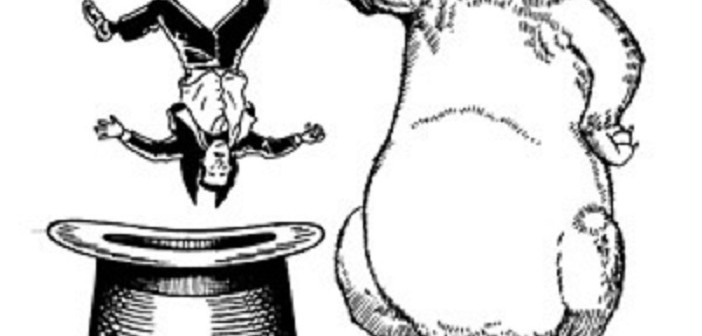Editor’s Note: If you are brave, skip to the end of the post and take the Hat Trick Quiz first. Some of the answers are in this post, but there are a few surprise questions not covered in this post.
The Heisman Trophy is probably the most well-known symbol of individual achievement among males in American sports. But in the global arena, the hat trick—scoring three goals in a game—is a more gratifying achievement for the athlete and a more exciting experience for the fans.
The term “hat trick” was originated in England during the mid-19th century to describe the nearly impossible task of a cricket bowler (pitcher) dismissing three batters (taking three wickets) in three consecutive deliveries of the ball (pitches).
As legend has it, a hat was passed round and players and spectators offered contributions. A cricketer named H.H. Stephenson hit for the first hat trick in 1858 and a hat was presented to him, purchased with the proceeds of the collection.
But it wasn’t until the hat trick migrated across the Atlantic to the new world that it became a standard phrase among sports world pundits.
Ice hockey, the Canadian national game, made the term popular in the 40s and 50s. In the 40s a Toronto haberdasher, hat maker, made it a practice to give the Toronto Maple Leafs hats when the trick was achieved.
But this version has more currency. According to Wikipedia, ”a local Toronto businessman, Sammy Taft, was approached by the Chicago Blackhawks forward Alex Kaleta. According to legend, Kaleta entered Taft’s shop to purchase a new hat but did not have enough money. Taft arranged a deal with Kaleta stipulating that if he scored three goals as he played the Toronto Maple Leafs that night, he would give him a free hat. That night, on 26 January 1946, Kaleta scored four goals against the Maple Leafs and Taft made good on his offer.”
Back then, the National Hockey League had just six teams. The old school game featured a more open and deliberate style of play and fewer and longer passes. Scoring was dictated by how closely referees called penalties like holding and hooking—that impeded shooters—and made it more difficult to score three goals than it does today. And, of course, how the linesman can be whistled offsides.
When sticks were straight and the slap shot was a thing of the future, goalies played without masks and skaters played without helmets. If you put three biscuits in the basket and usually an enterprising local haberdasher who was a hockey fan gave you got a hat. Players didn’t earn much in those days and the gesture was a welcome one.
Old school legends like Maurice Richard and Gordie Howe and modern era stars like Bobby Hull, Bobby Orr, Wayne Gretzky, and Mario Lemieux are just a few of the names of hat trick scorers found in the NHL record book.
The hat trick in Association Football (soccer) occurs when a player scores three goals in a match, but not on penalty shots. Its notoriety grew internationally when players started earning big salaries during the mid-1950s and games were broadcast on radio and TV. There is an ongoing debate among sportswriters, commentators and bloggers as to whether it is more difficult to score a hat trick in hockey than it is in football (soccer).
Women get hat tricks in ice hockey too. In North America and Europe hockey is the sport to play if you are a female and you like the competition of contact sports. And in women’s soccer hat tricks abound thanks to the high level of competitive play at universities including, among others Princeton.
In hockey and soccer the best hat trick is when the player doing the scoring contributes to a decisive win, not running up the score in “garbage time” when the opponent has little mathematical chance of coming back for the win.
Here, in this YouTube video Manchester United’s Dutch star Robin van Persie bangs home a winner in a 3-2 victory against rival Southampton.
Meanwhile Brazil striker Neymar scored a hat trick recently in a 8-0 rout of a weak China squad. His celebration on scoring is a reminder of the great personal achievement that the hat trick symbolizes. The 20 year old superstar earns $4 million dollars a year playing for Santos in Brazil’s first division. But he just bought an $8 million dollar yacht. With his trademark hair styles, he doesn’t need hats. But he needs all the hat tricks he can get.
There is a lot more to hat tricks and many other sports have them. So we’ve arranged a little quiz to test your knowledge of hat trick trivia. And to support the correct answers, we got our info from here.




